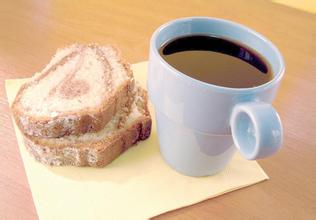Introduction to the treatment of raw coffee beans introduction of honey treatment introduction to the treatment process of coffee production
Honey treatment as an advanced coffee processing method, there is no lack of practitioners in Yunnan. But not everywhere is suitable for the production of honey beans, coffee producing areas are mostly wet and rainy, this process is very easy to make coffee beans fermented mildew, mildew taste. Because some places in the use of honey treatment, but also the use of microbial natural nutrients to cultivate honey treatment process is vulnerable to pollution and mildew, the need for close care of the whole process, constantly turning, speed up drying, in order to avoid bad fermentation flavor. The treatment methods of brown raw beans can be divided into three kinds. The distinction between each method is based on the fact that several layers of matter are removed from the fruit before the coffee is dried. The following is a list of the three major processing methods:
1. Natural sun treatment: retain all substances
two。 Honey treatment: remove the peel and pulp and retain some or all of the mucous membrane (honey)
3. Washing method: the peel, pulp and mucous membrane are removed by washing and fermentation. This method is also known as the complete washing method (Fully Washed). Shampoo is the most common way for most coffee-producing countries in the world to handle Arabica coffee beans. Some areas also use advanced high-pressure washing machines to clean the peel, pulp and mucous membrane of coffee beans, so fermentation is no longer needed. This method of using a high-pressure washing machine to treat coffee beans is called "Natural Water washing (Pulped Natural)". Its advantage is that it can best preserve the original sweet flavor of the ripe fruit of the coffee, giving the coffee a light black sugar flavor and drupe flavor, while the berry flavor also supports the basic aroma of red wine and is considered to be a very elegant product. The popularity of honey-treated coffee beans is largely due to its sweet and thick characteristics, which are very suitable for Espresso production in cafes. In recent years, more and more coffee beans are called "Miel Process", and they have also become the preferred material for international coffee contestants, so-called honey treatment (Spanish for Miel Process), which refers to the process of making raw beans with mucous membranes for sun-drying. After the outer pulp of the coffee bean is removed, there will be a layer of sticky jelly. The traditional method of washing is to wash it off with clean water, but because of the limitation of water resources in some high-altitude areas, this method of direct drying appears.

Important Notice :
前街咖啡 FrontStreet Coffee has moved to new addredd:
FrontStreet Coffee Address: 315,Donghua East Road,GuangZhou
Tel:020 38364473
- Prev

Coffee bean washing method introduces which coffee bean varieties are treated by washing method
Washing is currently the most popular method of treatment, most of the fine coffee beans will choose washing method. Washing coffee refining process: harvesting tank (remove impurities and immature beans) pulp remover (remove pulp and impurities) fermentation tank (remove mucosa attached to the endocarp) washing tank (select light and hard beans) solarization field (or dryer) hulling machine (
- Next

Sun-treated coffee beans with charming citrus jasmine flavor introduce sun-treated coffee
Flavor introduction: if the washed Yega Chuefei has charming citrus, jasmine, lemon and other fragrances, the entrance of coffee is in full bloom ~ the sun Yega is more like a fruit bomb that explodes after the entrance, bold, wild, fruit-flavored syrup-like sweetness and mellow thickness in addition to its own citrus lemon aroma, blueberry and strawberry wine is amazing! The flavor is really better than water.
Related
- What is the meaning of lactic acid fermentation with coffee bean treatment?
- How to judge the state of foam by sound?
- How does the latte pull out the unicorn pattern? Come to get for a little trick to improve the flower pull!
- Will flower pulling affect the taste of the latte?
- Do you know the history of coffee?
- The difference between honey treatment and sun washing what is raisin honey treatment?
- What kind of milk can a novice use to make coffee foam to keep the foam longer? The correct method and skills of milking tutorial sharing
- Why do washed coffee beans taste sour? Flavor characteristics of washed Coffee
- Introduction to the skill of how to practice the size and height of water injection around the circle of hand-brewed coffee
- How do beginners practice coffee flower drawing from scratch?

